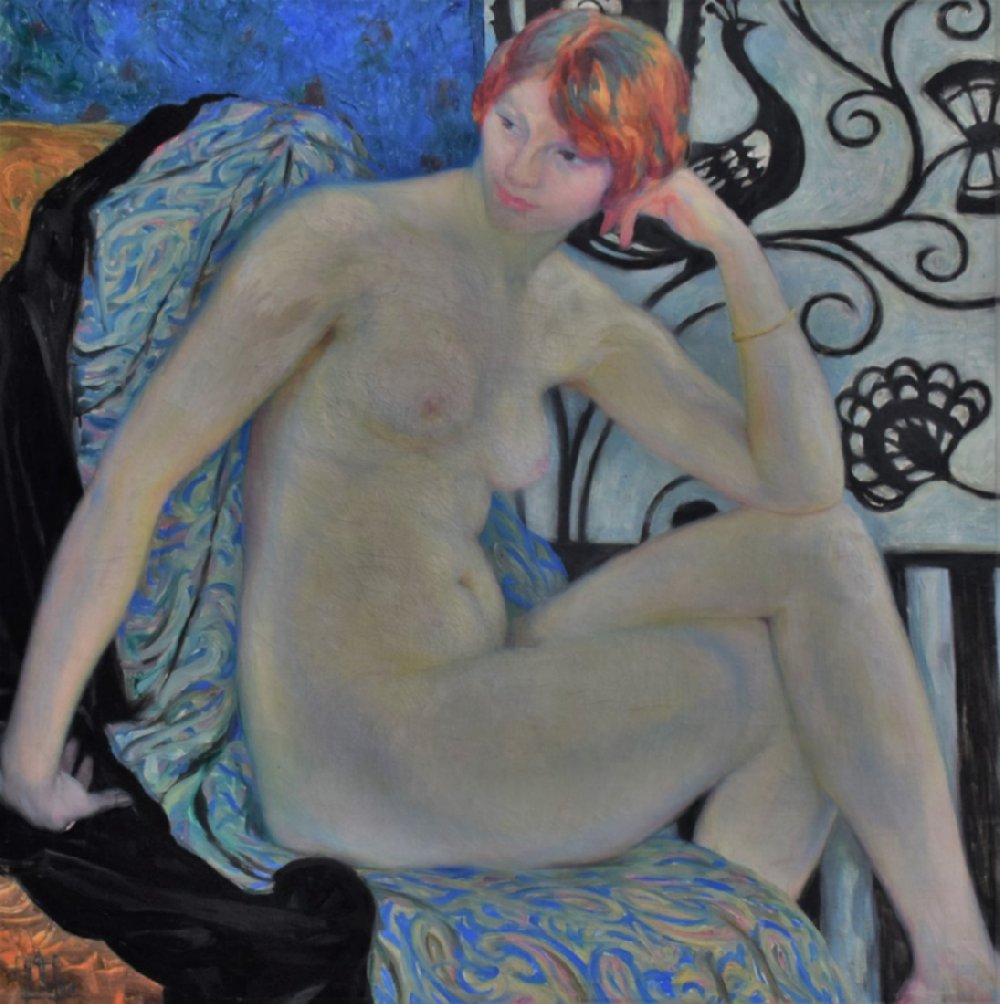Description:
Clémentine–Hélène Dufau (1869–1937) studied at the Académie Julian in Paris. She was a painter and lithographer. She studied with William–Adolphe Bouguereau, Gabriel Ferrier, and Tony Robert–Fleury. Her early works are examples of allegorical painting, also in a monumental form, adorning the walls of the Sorbonne. She was most interested in nudes set against the backdrop of nature. In 1898 she received a scholarship to travel to Spain for study. The journey resulted in a departure from the impressionism that dominated her work, towards a decorative style that foreshadowed Art Deco*.
Clementine–Helene Dufau‘s artistic record featuring female nudes can be divided into four periods. In the first one, the painter drew upon impressionism. Then, symbolic nudes appeared. The third phase was characterized by a flat decorative style in the Art Nouveau, when “Vision intime“ was created. This belonged to the works that heralded the inevitable coming of the fourth stage – Art Deco.
Description of the painting:
We find ourselves inside a painter‘s studio. Here, an intimate vision of the artist is revealed to us. Seated on a brightly coloured, patterned, two–sided fabric chair is the nude model. Her body is turned to the right, while her head is turned in the opposite direction. Her legs are crossed. She has supported her head with her left hand.
The position adopted by the woman is certainly not the most comfortable one. The characteristic arrangement of her right hand shifts all the emphasis onto her curled palm. This accentuates the pose that is not suitable for remaining motionless for hours and enlivens the contour of the nude body.
The variety of curves, undulations and counter-folds of the body outline of the model corresponds with the ornamental style of the background. On the curtain behind the woman, or screen, a peacock is presented in monochromatic colors – a symbol of beauty and vanity. It is accompanied by a decorative pattern of branches bent in an eso shape.
The red color of the woman’s hair contrasts with the accompanying blue pattern of the wall. The naked, porcelain-colored body presented on the patterned background of the surrounding objects becomes a centrally located and uniform, flat color spot, characteristic of Art Nouveau art. It gives the presentation a balance. It attracts the attention of the viewer looking for visual relief.


